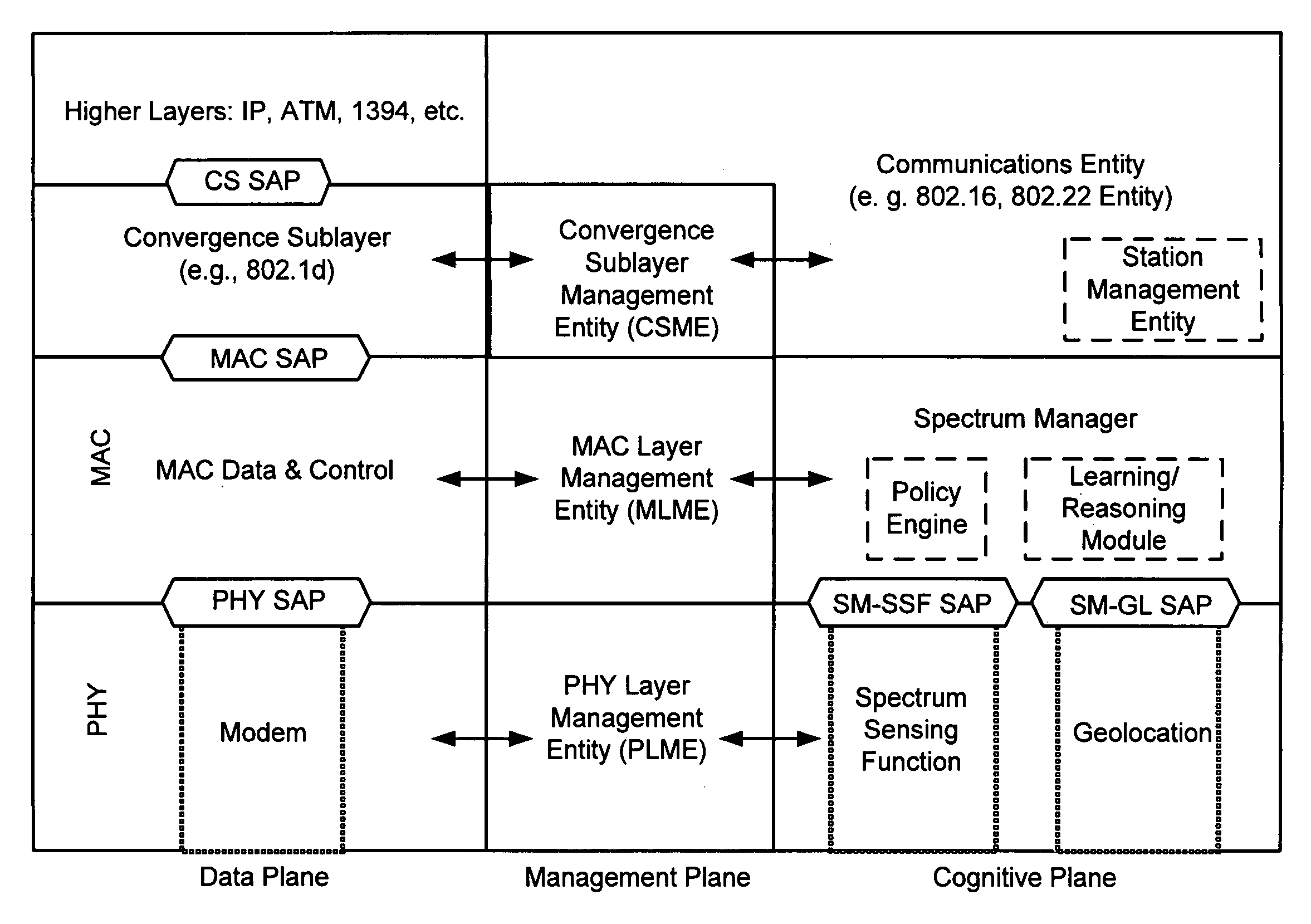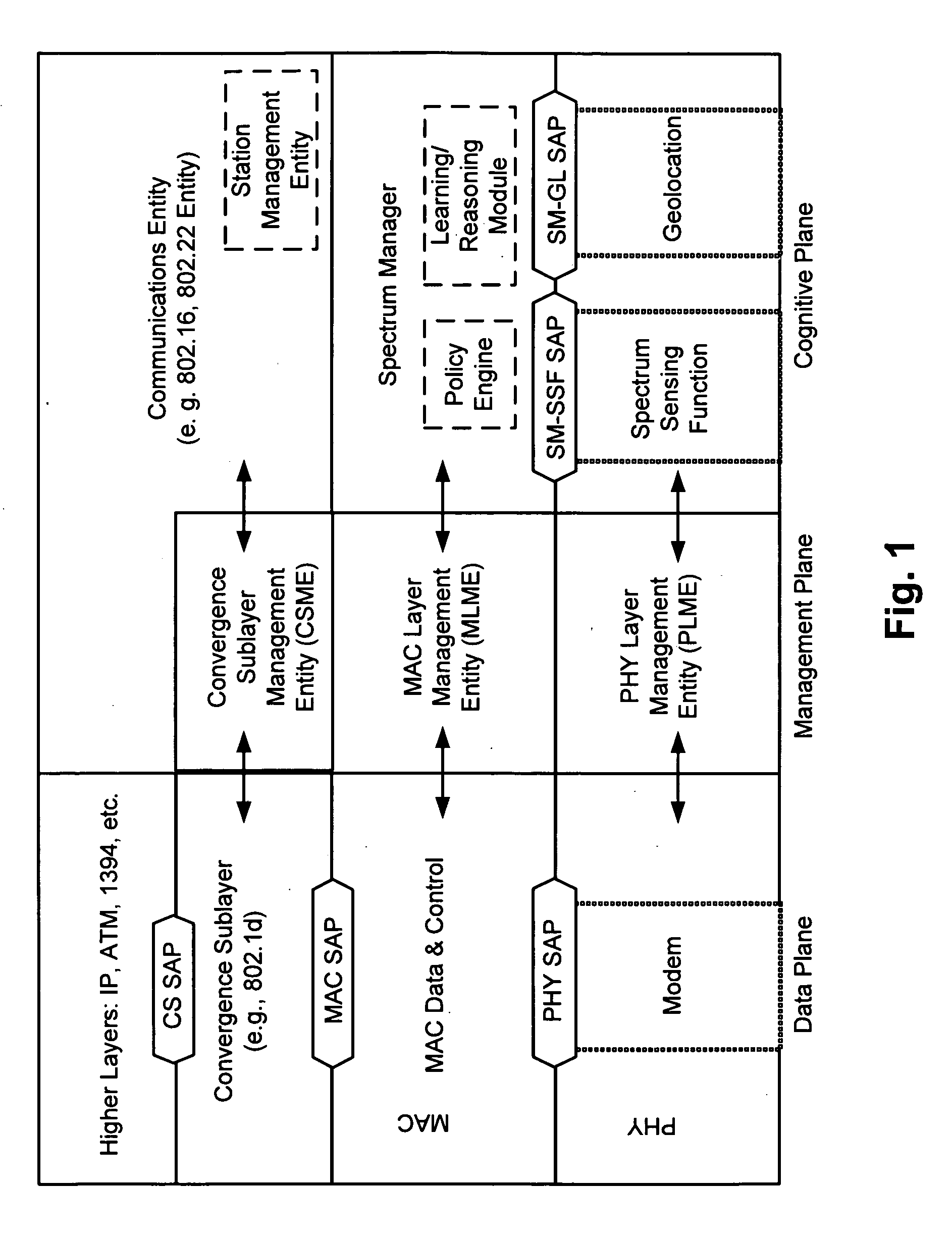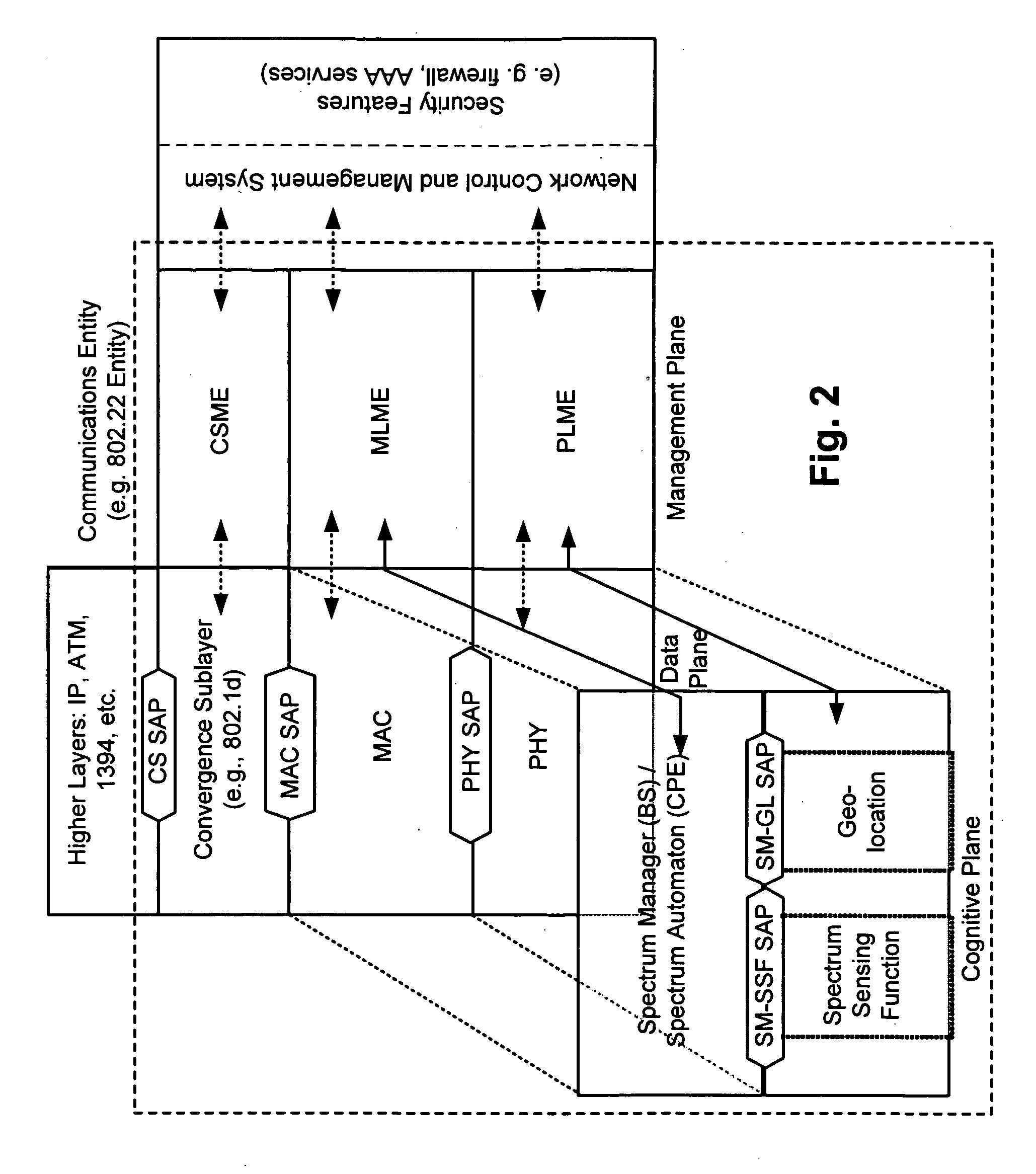Protocol reference model, security and inter-operability in a cognitive communications system
a communication system and protocol reference technology, applied in the field of communication systems, can solve the problems of uneven distribution, dynamic availability, and ineffective account of conventional prms describing communications systems
- Summary
- Abstract
- Description
- Claims
- Application Information
AI Technical Summary
Benefits of technology
Problems solved by technology
Method used
Image
Examples
Embodiment Construction
[0021]Cognitive communications systems and their corresponding Protocol Reference Models (PRMs) are disclosed. Techniques are provided by which various components of cognitive and non-cognitive, as well as mesh-enabled and non-mesh-enabled nodes in a network, inter-operate with each other. A communications system as described herein may follow a client-server architecture. A Server may refer to, for example, a Base Station (BS) or a Control Node (CN) or a Mesh Node (MN-S) acting as a Server. The Client may refer to a Subscriber Station (SS), a Mobile Station (MS), a Customer Premises Equipment (CPE), a Mesh Node (MN-C) acting as a Client or any equipment that is used as a communications platform with the rest of a network.
[0022]General Overview
[0023]A unique characteristic of a communications system as described herein is its cognitive capability. In particular, a cognitive communications system as described herein is capable of accounting for the fact that the availability of resou...
PUM
 Login to View More
Login to View More Abstract
Description
Claims
Application Information
 Login to View More
Login to View More - R&D
- Intellectual Property
- Life Sciences
- Materials
- Tech Scout
- Unparalleled Data Quality
- Higher Quality Content
- 60% Fewer Hallucinations
Browse by: Latest US Patents, China's latest patents, Technical Efficacy Thesaurus, Application Domain, Technology Topic, Popular Technical Reports.
© 2025 PatSnap. All rights reserved.Legal|Privacy policy|Modern Slavery Act Transparency Statement|Sitemap|About US| Contact US: help@patsnap.com



